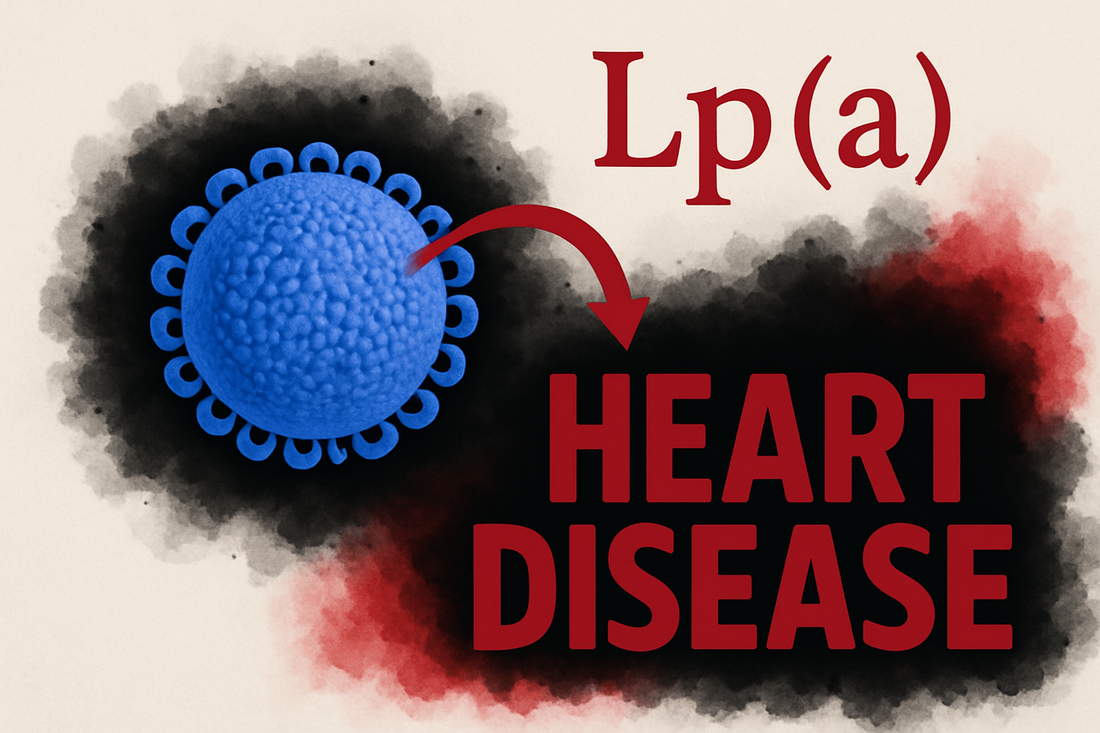
Why We Test for Lipoprotein(a): The Hidden Heart Risk You Can’t Ignore
By Bryce WyldeWhy We Test for Lipoprotein(a): The Hidden Heart Risk You Can't Ignore
Most men have never heard of Lipoprotein(a), also known as Lp(a). Even fewer know if they have elevated levels. Yet this genetically determined cholesterol particle could be one of the most important markers when it comes to assessing long-term cardiovascular risk.
Standard physicals don’t test for Lp(a) but at HUSBAND, we do. It’s included in our SiPhox-powered Mega Panel, because what you don’t know can hurt you.
What Is Lipoprotein(a)?
Lp(a) is a type of lipoprotein—similar to LDL (“bad cholesterol”)—but with a dangerous twist. It’s made up of an LDL particle bound to a protein called apolipoprotein(a), which gives it unique and more harmful properties.
Unlike other cholesterol markers, Lp(a) is almost entirely genetic. That means diet and exercise often won’t move the needle. You can be fit, eat well, and still have elevated Lp(a)—and not know it until it’s too late.
What It Does (and Why It Matters for Men 40+)
High Lp(a) is a stealth threat. Here's why it’s concerning:
-
Increases arterial plaque formation
-
Promotes inflammation in vessel walls
-
Enhances clot formation
-
Inhibits clot breakdown
That combo leads to a greater risk of heart attacks, strokes, and atherosclerosis—especially in men over 40 who already have elevated LDL or a family history of heart disease.
| It’s not just about knowing your cholesterol. It’s about knowing the cholesterol that runs in your family.
What the Research Says
-
Elevated Lp(a) is an independent risk factor for cardiovascular events, even when LDL and total cholesterol are normal.
-
A 2022 meta-analysis published in JAMA Cardiology showed that each 50 mg/dL increase in Lp(a) was associated with a 30–50% increase in cardiovascular risk.
-
It is now recognized in European and Canadian guidelines as a key marker to assess lifetime CVD risk—particularly in those with premature heart disease in the family.
Why We Include It in Our Testing
Most men won't discover their Lp(a) status until after a major event like a heart attack. That’s not acceptable.
We test for Lp(a) in the HUSBAND + SiPhox Mega Panel so you can:
-
Understand your cardiovascular genetics
-
Layer in proactive strategies (like niacin, omega-3s, nattokinase, and more)
-
Know if you’re in a high-risk category that needs deeper clinical follow-up
| This isn’t about scaring you. It’s about empowering you to change the day you die.
What to Expect
If your Lp(a) is elevated, we’ll:
-
Flag it in your report
-
Discuss next steps during your 1:1 consult
-
Offer natural, functional interventions with clinical support
-
Help you track it over time
Knowing your Lp(a) isn’t optional, it’s essential!
What Experts Say
Dr. Peter Attia, MD emphasizes that testing for Lipoprotein(a), or Lp(a), is not optional—it’s essential. He explains that Lp(a) is a genetically determined, independent risk factor for cardiovascular disease that often goes undetected on standard lipid panels. Because it cannot be meaningfully altered by diet, exercise, or statins, Dr. Attia recommends that everyone test their Lp(a) at least once. Knowing your level, he says, can be the difference between preventative action and a missed risk that could lead to heart attack or stroke.

